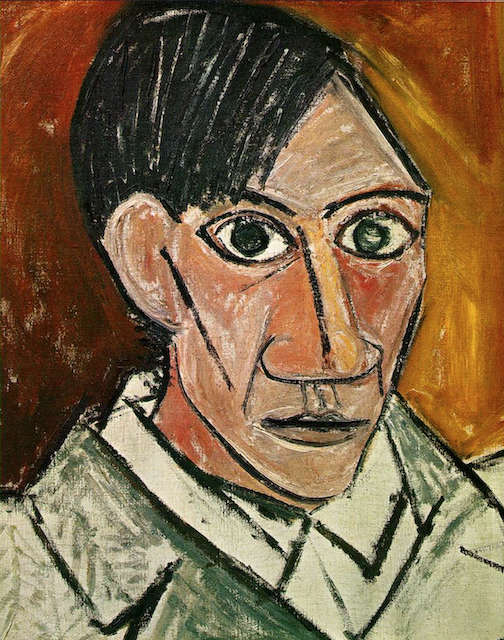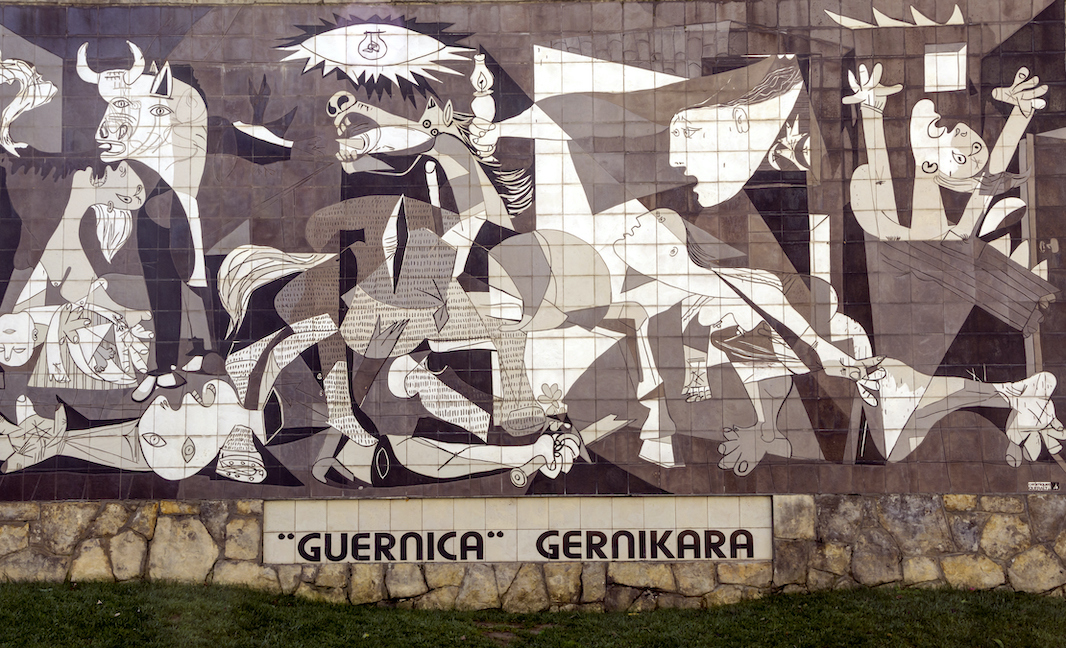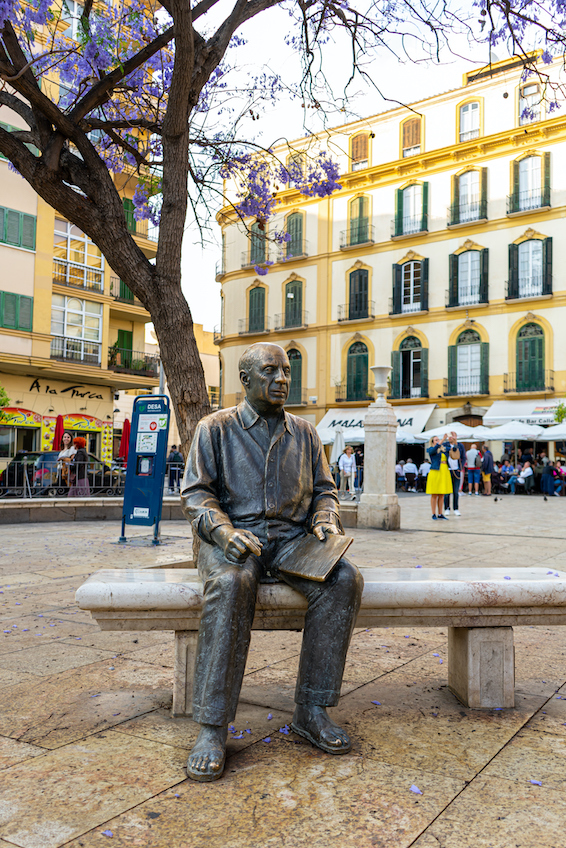 Pablo Picasso, one of the most influential artists of the 20th century, was born on October 25, 1881, in Málaga, Spain. From an early age, Picasso exhibited an extraordinary talent for drawing and painting, nurtured by his father, Don José Ruiz Blasco, who was an art teacher. By the time he was a teenager, Picasso was already showing signs of the genius that would later revolutionize the art world.
Pablo Picasso, one of the most influential artists of the 20th century, was born on October 25, 1881, in Málaga, Spain. From an early age, Picasso exhibited an extraordinary talent for drawing and painting, nurtured by his father, Don José Ruiz Blasco, who was an art teacher. By the time he was a teenager, Picasso was already showing signs of the genius that would later revolutionize the art world.
Early Years and Discovery of Paris
Picasso’s early years were marked by a rigorous academic training in art, which he received in Spain. He attended the prestigious Royal Academy of San Fernando in Madrid, but the rigid academic environment did not satisfy his creative spirit. Restless and eager to explore new artistic horizons, Picasso made his first trip to Paris in 1900, a city that would become his true artistic home.
Paris, at the turn of the century, was the epicenter of the art world, teeming with avant-garde artists, writers, and thinkers. Picasso was captivated by the vibrant cultural scene, and he quickly immersed himself in the bohemian lifestyle of Montmartre, befriending other artists like Henri Matisse and Georges Braque. The city’s influence on Picasso’s work was profound, marking the beginning of a series of distinct artistic periods.
The Blue Period (1901-1904)
Picasso’s Blue Period, which began in 1901, was characterized by a somber palette dominated by shades of blue and blue-green. This period was deeply influenced by the artist’s experiences of poverty, death, and melancholy. The tragic suicide of his close friend, Carlos Casagemas, had a profound impact on Picasso, and his paintings during this time often depicted emaciated figures, beggars, and melancholic subjects. Works like “The Old Guitarist” and “La Vie” reflect the desolation and despair that marked this period.
The Rose Period (1904-1906)
In 1904, Picasso’s mood and palette began to brighten, ushering in the Rose Period. During this time, he moved away from the cold blues and embraced warmer pinks and earth tones. The subjects of his paintings also shifted, focusing on circus performers, acrobats, and harlequins—figures that represented the transient, often marginalized world of the traveling circus. The Rose Period is often seen as a reflection of Picasso’s growing optimism and his deepening relationship with Fernande Olivier, his first serious romantic partner. Works like “Family of Saltimbanques” and “Boy with a Pipe” are iconic examples of this period.
The Birth of Cubism (1907-1914)
Picasso’s artistic evolution took a radical turn with the advent of Cubism, a movement he co-founded with Georges Braque. This groundbreaking style deconstructed objects into geometric shapes and reassembled them in abstract forms. The famous painting “Les Demoiselles d’Avignon” (1907) is often cited as the first Cubist work, breaking away from traditional perspective and representation. Cubism revolutionized the way art was perceived, influencing countless artists and movements. Picasso’s Analytical Cubism, characterized by monochromatic tones and fragmented forms, eventually evolved into Synthetic Cubism, which incorporated brighter colors and mixed media.
Life in Paris During World War I and the Surrealism (1914-1930s)
World War I brought significant changes to Picasso’s life and work. Although he remained in Paris during the war, the conflict profoundly affected him and the city’s artistic community. During this period, Picasso’s work became more classical in style, a departure from the radical experimentation of Cubism. His connection to the Surrealist movement, however, began to emerge in the 1920s. While Picasso never fully embraced Surrealism, he was deeply influenced by its exploration of the unconscious mind and dream imagery. Works like “The Three Dancers” (1925) reflect the eerie, distorted figures that typify Surrealist art.
Ceramics and World War II (1940s)
The outbreak of World War II saw Picasso remaining in Paris, despite the Nazi occupation. His art from this period, such as “Guernica” (1937)—a response to the bombing of the Basque town during the Spanish Civil War—expressed his anti-war sentiments. Picasso’s work during the war years was marked by a return to more expressive, emotive forms, often reflecting the suffering and turmoil of the times.

After the war, Picasso turned to ceramics, a medium that offered him a new form of creative expression. He established a studio in Vallauris, in the South of France, where he produced thousands of ceramic pieces, imbuing this traditional craft with his unmistakable style. This period also saw Picasso embracing a more colorful, playful approach to art, as seen in his ceramics and later paintings.
Marriages, Children, and the True Love of His Life
Picasso’s personal life was as tumultuous and passionate as his art. He married twice—first to Olga Khokhlova, a Russian ballerina, and later to Jacqueline Roque, who became his muse during his later years. Picasso had four children with three different women: Paulo (with Olga Khokhlova), Maya (with Marie-Thérèse Walter), and Claude and Paloma (with Françoise Gilot).
Despite his numerous relationships and marriages, many believe that the true love of Picasso’s life was Françoise Gilot, the only woman to leave him. Gilot, an artist in her own right, had a significant influence on Picasso during their decade-long relationship, and their children, Claude and Paloma, went on to have successful careers in art and design. Picasso’s relationships were often fraught with conflict, but they also fueled his creativity, inspiring many of his most iconic works.

Legacy
Pablo Picasso continued to work prolifically until his death on April 8, 1973, in Mougins, France. His legacy as an artist is unparalleled, with a body of work that spans more than seven decades and encompasses a wide range of styles and mediums. Picasso’s ability to reinvent himself and his art continuously, his influence on modern art, and his complex personal life have cemented his place as one of the most important figures in art history. His exploration of form, color, and emotion continues to inspire and challenge artists and art lovers around the world, making him a towering figure whose impact will be felt for generations to come.
-Phượng Vỹ-
